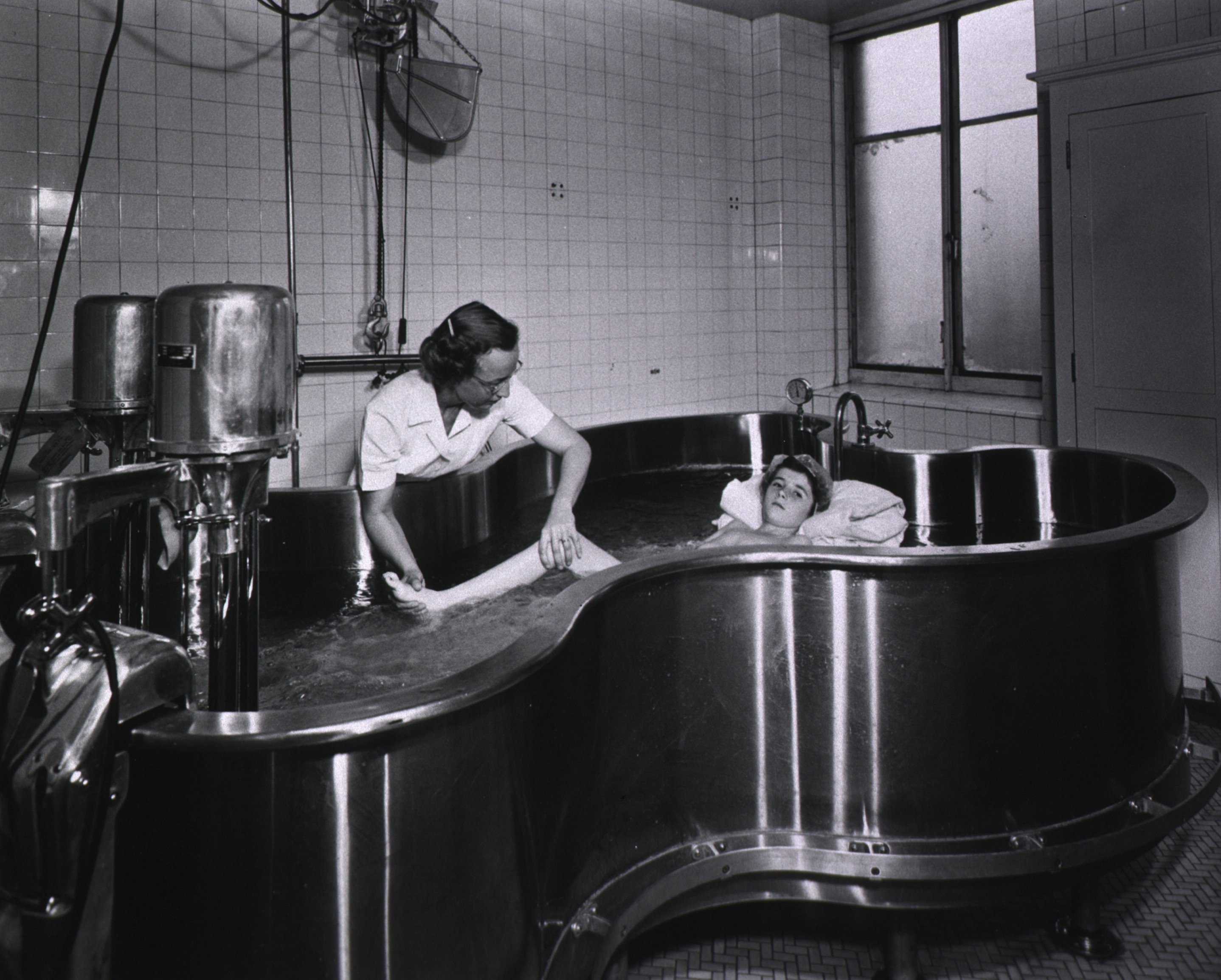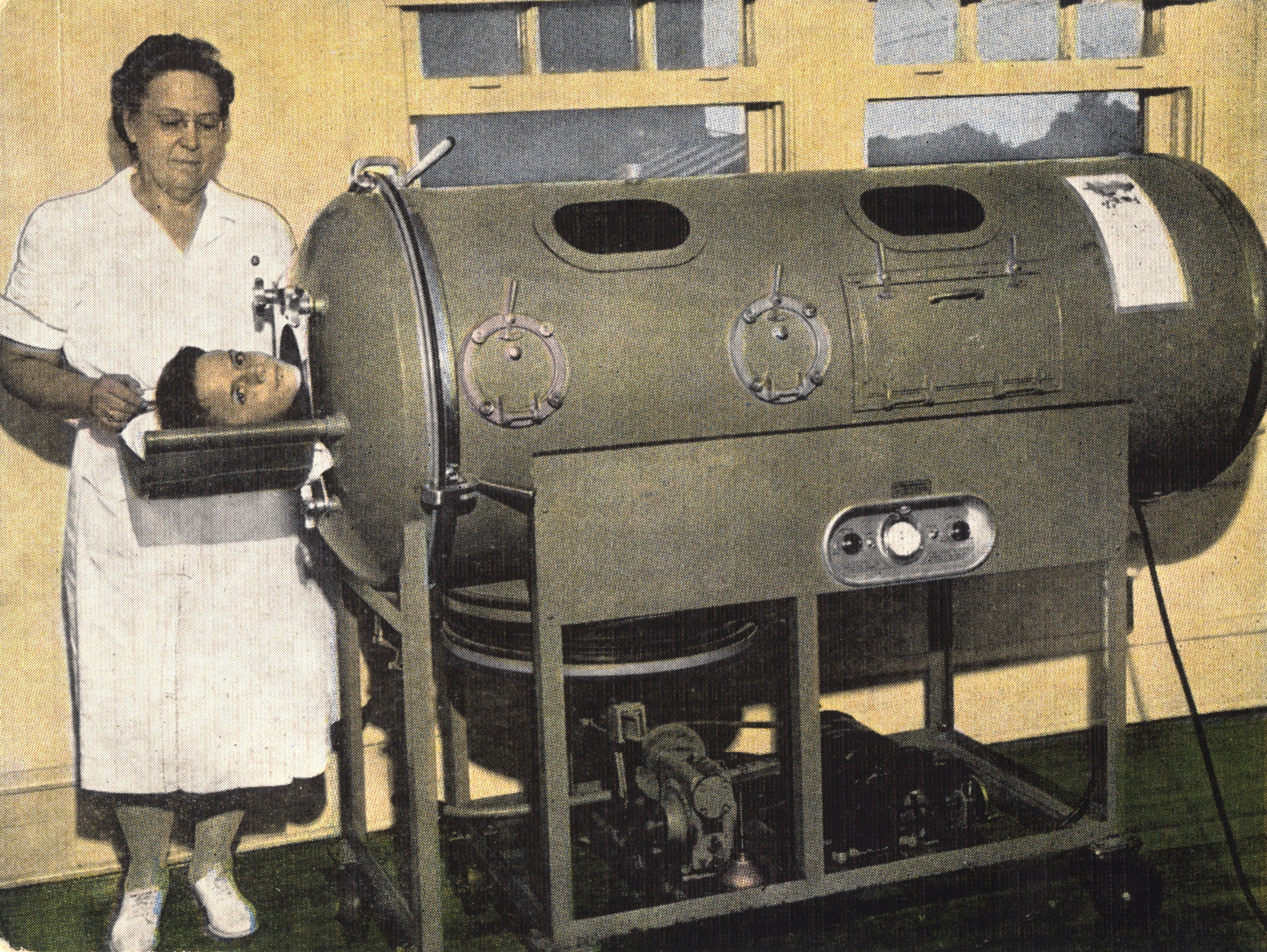Brief History of Polio
| Dive | ||||||||||||||||||||
|---|---|---|---|---|---|---|---|---|---|---|---|---|---|---|---|---|---|---|---|---|
| ||||||||||||||||||||
|
There were serious outbreaks in Europe and the United States in the early 20th century, compelling scientists to try and find a vaccine. Polio, or poliomyelitis, is a disabling and life-threatening disease caused by the poliovirus. The virus spreads from person to person and can infect a person’s spinal cord, causing paralysis. Symptoms of polio include flu-like symptoms such as sore throat, fever, tiredness, nausea, headache, and stomach pain. Some people experienced more serious symptoms like paresthesia (feeling of pins and needles in the legs), paralysis (can’t move part of the body), and meningitis (an infection of the covering of the spinal cord and/or brain). These more severe symptoms caused fear before the vaccine was invented. In the late 1940s, more than 35,000 people were disabled by polio each year.
Iron lungs were large metal tube-like boxes that provided breathing support for paralyzed polio patients (two photos below). The iron lung was first invented in 1929 by Dr. Phillip Drinker and Dr. Charles McKhann at Boston Children’s Hospital. Iron lungs were temporary, or sometimes permanent, solutions for polio patients whose paralysis affected their breathing.
Although polio has no cure, as you will read in this timeline, vaccines have successfully eradicated polio in the western hemisphere since 1994.
| Dive | ||||||||||||||||||||||||||||||||||||||||||||||||||||||||||||||||||||||||||||||||||||||||||||||||||||||||||||||||||||||||||||||||||
|---|---|---|---|---|---|---|---|---|---|---|---|---|---|---|---|---|---|---|---|---|---|---|---|---|---|---|---|---|---|---|---|---|---|---|---|---|---|---|---|---|---|---|---|---|---|---|---|---|---|---|---|---|---|---|---|---|---|---|---|---|---|---|---|---|---|---|---|---|---|---|---|---|---|---|---|---|---|---|---|---|---|---|---|---|---|---|---|---|---|---|---|---|---|---|---|---|---|---|---|---|---|---|---|---|---|---|---|---|---|---|---|---|---|---|---|---|---|---|---|---|---|---|---|---|---|---|---|---|---|---|
| ||||||||||||||||||||||||||||||||||||||||||||||||||||||||||||||||||||||||||||||||||||||||||||||||||||||||||||||||||||||||||||||||||
|
| Dive | |||||||||||||||||||||||||||||||||||||||||||||||||||||||||||||||||||||||||||
|---|---|---|---|---|---|---|---|---|---|---|---|---|---|---|---|---|---|---|---|---|---|---|---|---|---|---|---|---|---|---|---|---|---|---|---|---|---|---|---|---|---|---|---|---|---|---|---|---|---|---|---|---|---|---|---|---|---|---|---|---|---|---|---|---|---|---|---|---|---|---|---|---|---|---|---|
| |||||||||||||||||||||||||||||||||||||||||||||||||||||||||||||||||||||||||||
|




